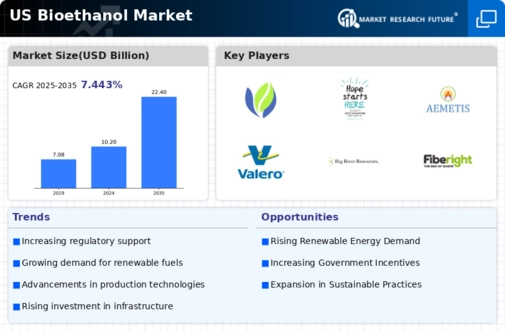The US Bioethanol Market has evolved significantly over the years, showcasing a competitive landscape characterized by innovation, technological advancements, and strategic partnerships. This market is primarily driven by increasing fuel efficiency mandates, government incentives, and a rising consumer preference for cleaner energy sources. Major players are continuously working on enhancing their production processes and expanding their operational capacities to meet the growing demand for bioethanol, which is recognized as a key alternative to fossil fuels. As the market matures, companies are focusing on not only improving efficiency but also developing sustainable practices that align with environmental goals.
Understanding the dynamics of competition within this market is essential for stakeholders aiming to navigate its complexities effectively.
Pacific Ethanol has established itself as a leader within the US Bioethanol Market with a robust presence and a strategic focus on growth. The company benefits from a diverse portfolio of production facilities and an integrated supply chain that maximizes efficiencies and minimizes costs. One of Pacific Ethanol's key strengths lies in its operational flexibility, allowing it to adapt its production according to market demands. The company has also been involved in various collaborations and investments aimed at increasing production capacities and developing advanced biofuels, which enhances its competitive edge.
Furthermore, Pacific Ethanol's commitment to sustainability and innovation positions it as a forward-thinking player in the bioethanol segment, helping to drive its continued success in this evolving market.
Louis Dreyfus Company plays a significant role in the US Bioethanol Market, being recognized for its extensive global network and operational expertise. The company is engaged in the production of bioethanol as well as related products, contributing to a more sustainable energy landscape. With a strong market presence, Louis Dreyfus Company leverages its deep understanding of agricultural commodities to enhance its supply chain efficiency. The company's strategic initiatives have included mergers and acquisitions that bolster its capabilities and expand its market footprint while enabling it to harness synergies that improve overall performance.
Louis Dreyfus Company's adherence to sustainability principles, along with its focus on quality and innovation, reinforces its strengths and aids in maintaining a leadership position in the US bioethanol sector.





















Leave a Comment